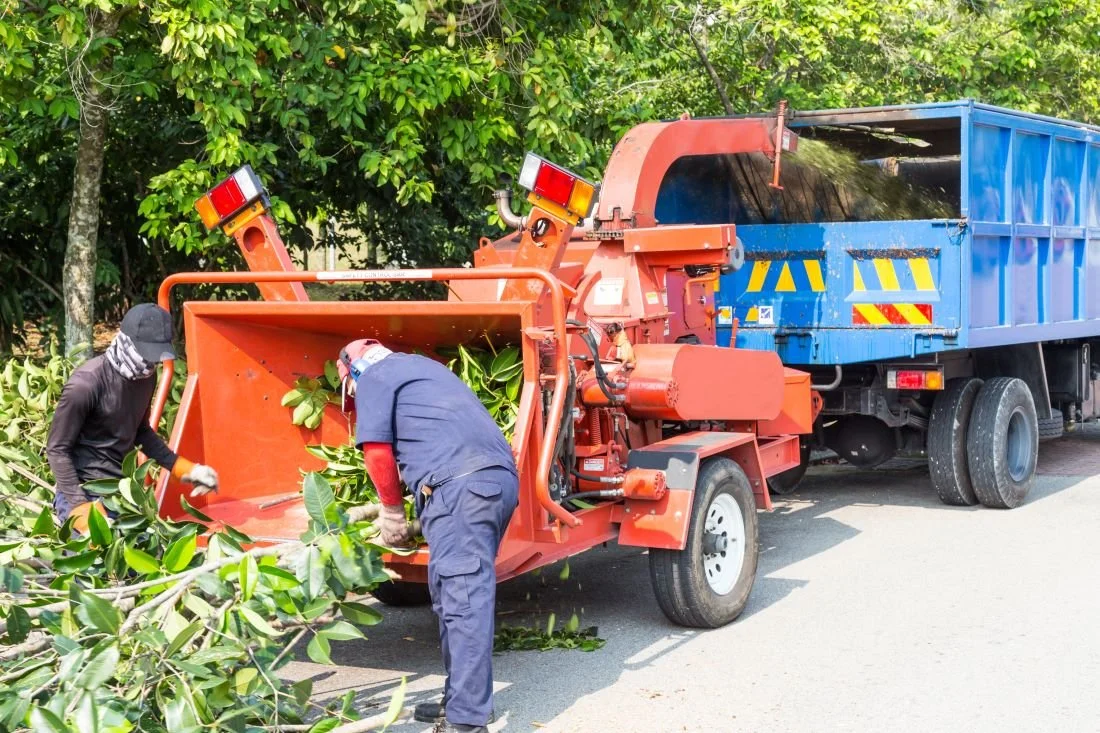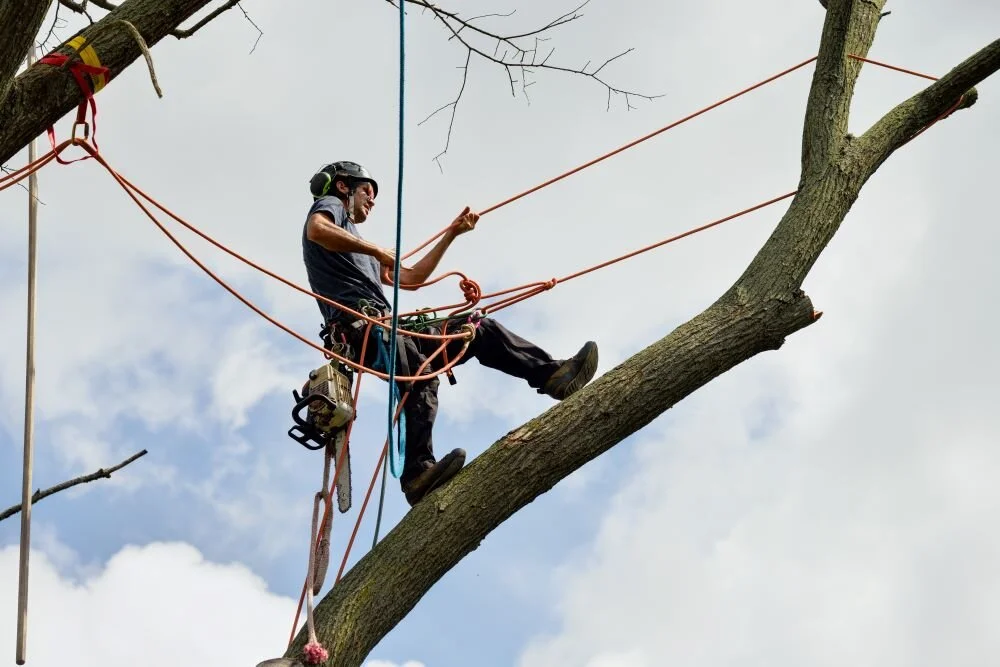
Industry News

Preventing Stress Claims
Author, Jack Marrs, Associate Account Executive, Human Services Group, Rancho Mesa Insurance Services, Inc.
Specializing in non-profit insurance has opened my eyes to how difficult it is for some non-profit employees to deal with the stress related to their jobs. It’s the nature of the work. Helping people through difficult situations can be rewarding for an employee, but it can also be emotionally draining when they become invested in their clients to the point where it can lead to burnout.
Author, Jack Marrs, Associate Account Executive, Human Services Group, Rancho Mesa Insurance Services, Inc.
Specializing in non-profit insurance has opened my eyes to how difficult it is for some non-profit employees to deal with the stress related to their jobs. It’s the nature of the work. Helping people through difficult situations can be rewarding for an employee, but it can also be emotionally draining when they become invested in their clients to the point where it can lead to burnout.
Employees can suffer from emotional and mental illness as a result of their working environments, which can lead them to file workers’ compensation claims. Depending on the nature of the non-profit’s mission, employees may witness a variety of disturbing realities that the general public isn’t used to experiencing.
Since psychiatric injuries are based on an employees' personal experience, it’s much more difficult for physicians to verify these types of claims. Plus, these conditions can also develop from multiple stressors in an employee’s professional and personal life like when they are dealing with a death, going through a divorce, or filing for bankruptcy. So, it’s hard to determine what percentage of the claim is work-related and what percentage is caused by outside factors.
Workplace stress can trigger mental and physical illnesses and injuries, so identifying and correcting stressful situations early, can prevent costly health care costs and workers’ compensation claims.
Managers should periodically check in with their employees to see how they are doing with regards to their workload, relationships with clients, co-workers and vendors, etc., but also their personal lives. If there is an issue in the workplace, it can be addressed quickly before it causes extreme stress to the employee. If something is happening at home, it could be affecting their productivity and performance on the job. And, the employer may be able to refer their employee to resources to assist them as they deal with whatever stressors are in their personal lives. This also helps to establish if the stress felt by the employee is work-related or personal.
Employers can reduce workplace stress by ensuring effective communication from supervisors to employees. Whether the communication is about job duties and expectations, career growth within the organization, or a traumatic event and relevant resources to help employees cope, being transparent with employees can relieve some stress caused by not knowing what’s to come.
Stress claims take a tremendous toll on both employees working for non-profits and the organizations themselves. Rancho Mesa provides an extensive library of training offered through our Risk Management Center and the RM365 HRAdvantage™ Portal. These trainings can be easily accessed and allow for our non-profit clients to be proactive in mitigating the severe impact of stress claims.
Contact me at jmarrs@ranchomesa.com or (619) 486-6569 to learn more about these options.
Signing Up for Safety
Author, Greg Garcia, Account Executive, Landscape Group, Rancho Mesa Insurance Services, Inc.
There are many tips, ideas, and systems involved in creating a safe culture in the landscape industry. The most common practice landscape companies implement with regards to safety are regular safety meetings.
Author, Greg Garcia, Account Executive, Landscape Group, Rancho Mesa Insurance Services, Inc.
There are many tips, ideas, and systems involved in creating a safe culture in the landscape industry. The most common practice landscape companies implement with regards to safety are regular safety meetings.
For these meetings to be effective, you need to ask yourself three questions:
What should be discussed during these safety meetings?
How often do we really need to have these meetings?
Where can I find content for these meetings?
Let’s take a look at each question in more detail.
What should be discussed in these safety meetings? The easy answer is we will just talk about an accident that has recently occurred. That seems like a good approach, but it’s more of a reactive approach than proactive. Make no mistake about it, it is very important to go over safety regarding a previous incident, and take the necessary steps to help prevent that incident from happening again. However, a great safety culture includes a more proactive approach by covering safety topics before an incident occurs. Examples of good topics for safety meetings include something as simple as “Operating a Leaf Blower” to more pressing issues like “Handling Medical Emergencies and Jobsite Injuries.”
Secondly, how often do we need to hold these meetings? The quick answer as often as possible, but we recommend weekly safety meetings as they are the best way to create and change culture for the better. Weekly meetings build consistency. And, these good habits create a safety first culture by emphasizing safety and showing your employees that their wellbeing is a top priority. Plus, OSHA requires safety meetings at least every ten working days, so scheduling them weekly ensures you are meeting that requirement.
Finally, and what seems to be the most important question, is where can I find content for these safety meetings? Rancho Mesa wants to help provide that content. We publish a weekly landscape specific safety tailgate email. These emails arrive in your inbox every Tuesday and range from proper equipment use like “Avoiding Mower-Related Injuries,” to specific injury topics such as “Preventing Heat-Related Illness.” Our 52-week tailgate topics are not only landscape specific, but they correspond to the seasons, as well. So, you will not be receiving a topic on Heat Illness in the middle of winter, instead that topic is more likely to come out in the summer months. There are both English and Spanish versions of these tailgate topics that can be downloaded. These safety emails are something that our clients are taking full advantage of, and is a great way to take the burden of finding landscape specific safety topics off your plate, every week.
In an effort to serve and support the overall health and safety of the landscape community, we offer these trainings without charge to any landscape company that is interested in receiving them. Sign up to receive these trainings every week.
If you have any questions or would like more assistance in developing your safety program, contact me at 619-438-6905 or email me at ggarcia@ranchomesa.com.
Top 5 OSHA Violations for 2021
Author, Sam Clayton, Vice President, Construction Group, Rancho Mesa Insurance Services, Inc.
Every year, Federal OSHA conducts thousands of inspections and issues costly citations to companies. So, it is imperative for business owners and safety managers to be aware of the most common citations and how to avoid them through effective safety programs.
Author, Sam Clayton, Vice President, Construction Group, Rancho Mesa Insurance Services, Inc.
Every year, Federal OSHA conducts thousands of inspections and issues costly citations to companies. So, it is imperative for business owners and safety managers to be aware of the most common citations and how to avoid them through effective safety programs.
Back in September 2021, Rancho Mesa highlighted the top Cal/OSHA citations issued during the 2019/2020 reporting period in podcast Episode 136. Now that the 2021 Federal OSHA data is available, we can analyze the citations that were most common across the United States to see what’s changed and evaluate our safety programs to avoid being another statistic.
Although OSHA violations can be issued for numerous reasons, there are 5 citations that continue to show up on the list year after year, though their order may change slightly.
Fall Protection, General Requirements (29 CFR 1926.501)
This Standard outlines where fall protection is required, which systems are appropriate for given situations, the proper construction installation of safety systems, and the proper supervision of employees to prevent falls. It is designed to protect employees on walking/working surfaces (horizontal or vertical) with an unprotected side or edge above 6ft.There were 5,295 fall protection violations in 2021. To help avoid fall protection citations, take advantage of Rancho Mesa’s fall protection resources like the online awareness course and safety videos, a webinar on how to implement a fall protection and prevention plan, along with a library of fall protection training shorts (i.e., tailgate talks) that are designed to reinforce the company’s policies.
Respiratory Protection, General Industry (29 CFR 1910.134)
This standard directs employers on establishing or maintaining a respiratory protection program. It lists requirements for program administration, worksite specific procedures, respirator selection, employee training, fit testing, medical evaluation, respirator use, cleaning, maintenance and repair.There were 2,527 respiratory protection violations in 2021. The best way to avoid these types of citations is through training and documentation. Rancho Mesa’s Personal Protection Equipment (PPE) for Management and Respiratory Protection courses address implementing and enforcing the PPE program and information the employee needs to know about their respiratory protection, respectively.
Ladders, Construction (29 CFR 1923.1053)
This standard covers general requirements for all ladders.There were 2,026 ladder violations in 2021. The RM365 Advantage Safety Star™ Program’s Ladder Safety module provides an in-depth practical overview of ladder safety from seasoned risk control experts.
Scaffolding, General Requirements, Construction (29 CFR 1926.451)
This standard covers general safety requirements for scaffolding, which should be designed by a qualified person and constructed and loaded in accordance with that design. Employers are bound to protect construction workers from falls and falling objects while working on or near scaffolding at heights of 10ft or higher.There were 1,948 scaffolding violations in 2021. Safety is everyone’s responsibility, so utilizing Rancho Mesa’s scaffolding online course and safety videos to provide a general awareness of best practices to all employees is a proactive way to help comply with OSHA regulation 29 CFR 1926.451.
Hazard Communication Standard, General Requirements (29 CFR 1910.1200)
This standard addresses chemical hazards, both those chemicals produced in the workplace and those brought into the workplace. It also governs the communication of those hazards to workers.There were 1,947 hazard communication violations in 2021. Proper hazard communication in construction environments can save lives. Consider utilizing the variety of hazard communication resources in the Risk Management Center like online courses for both employees and management along with video training specific to hazard communication in construction environments and a sample Hazard Communication Program template.
Rancho Mesa knows these top five citations can be avoided by reviewing safety programs often and ensuring they are effective. Clients can take advantage of the RM365 Advantage Safety Star™ Program that specifically addresses some of the most common citations.
To discuss your safety program, workers’ compensation or other insurance needs, contact me at (619) 937-0167 or sclayton@ranchomesa.com.
Revised 2022 COVID-19 Prevention Program Template Now Available
Author, Alyssa Burley, Media Communications and Client Services Manager, Rancho Mesa Insurance Services, Inc.
Rancho Mesa has revised its written COVID-19 Prevention Program Template based on the Emergency Temporary Standards (ETS) adopted by California’s Department of Industrial Relations Occupational Safety & Health Administration (Cal/OSHA) in December 2021 and effective as of January 14, 2022.
Author, Alyssa Burley, Media Communications and Client Services Manager, Rancho Mesa Insurance Services, Inc.
Rancho Mesa has revised its written COVID-19 Prevention Program Template based on the Emergency Temporary Standards (ETS) adopted by California’s Department of Industrial Relations Occupational Safety & Health Administration (Cal/OSHA) in December 2021 and effective as of January 14, 2022.
To access the revised template, clients can access the editable version from the Risk Management Center, or request to download the PDF, below.
The template is designed to assist organizations in the development of a COVID-19 Prevention Program that is specific to their organization and locations. Rancho Mesa highly recommends organizations using this template also consult their state’s Occupational Safety & Health Administration and local Public Health Department for specific requirements for their area as requirements can vary from state to state and municipalities. For example, California’s Department of Public Health’s recent guidelines supersede some of the requirements in the ETS.
A discussion on the differences between the previous version and the current version can be found in Ep. 162
Remember, this template alone is not enough to be in compliance. It must also be adapted to each organization and specific locations, as well as implemented. Organizations’ programs may require additional information if the company provides employee housing.
For current COVID-19 information, visit www.RanchoMesa.com/covid-19.
OSHA Issues ETS Addressing Mandatory COVID-19 Vaccination or Testing
Author, Sam Clayton, Vice President, Construction Group, Rancho Mesa Insurance Services, Inc.
Last week, the U.S. Department of Labor’s Occupational Safety and Health Administration (OSHA) announced a new emergency temporary standard (ETS) to protect more than 84 million workers from the spread of the coronavirus on the job.
Author, Sam Clayton, Vice President, Construction Group, Rancho Mesa Insurance Services, Inc.
Update: November 16, 2021 - Since the original publication of this article, OSHA announced it “has suspended activities related to the implementation and enforcement of the ETS pending future developments in the litigation.”
Recently, the U.S. Department of Labor’s Occupational Safety and Health Administration (OSHA) announced a new Emergency Temporary Standard (ETS) to protect more than 84 million workers from the spread of the coronavirus on the job.
Under the ETS standard, employers must develop, implement and enforce a mandatory COVID-19 vaccination policy, unless they adopt a policy requiring employees to be either vaccinated or undergo weekly COVID-19 testing and wear a face covering at work.
The emergency temporary standard covers employers with 100 or more employees and provides options for compliance. The standard also requires employers to provide paid time to workers to get vaccinated and to allow paid leave to recover from any side effects from the vaccination.
The ETS requires employers to:
Determine the vaccination status of employees, obtain acceptable proof of vaccination and maintain records and a roster of each employee’s vaccination status.
Require employees to provide prompt notice when they test positive for COVID-19 or receive a COVID-19 diagnosis. Employers must then remove the employee from the workplace, regardless of vaccination status. Employers must not allow them to return to work until they meet required criteria.
Ensure each worker who is not fully vaccinated is tested for COVID-19 at least weekly (if the employee is in the workplace at least once a week) or within 7 days before returning to work (if the employee is away from the workplace for a week or longer).
Ensure that each employee who has not been fully vaccinated wears a face covering when indoors or when occupying a vehicle with another person for work purposes.
The ETS does not require employers to pay for testing. However, employers may be required to pay for testing to comply with other laws, regulations, collective bargaining agreements. So, check with state and local jurisdictions for requirements.
The ETS is effective immediately upon its publication in the Federal Register, which took place on Friday, November 5, 2021. Employers must comply with most requirements within 30 days of publication and with testing requirements within 60 days of publication, or January 4th of 2022.
While more than half of the states are challenging the legality of federal OSHA’s ability to enforce the new ETS requirements, it is likely that individual states with their own OSHA State Plans (i.e., Alaska, Arizona, California, Hawaii, Indiana, Iowa, Kentucky, Maryland, Michigan, Minnesota, Nevada, New Mexico, North Carolina, Oregon, South Carolina, Tennessee, Utah, Vermont, Virginia, Washington, and Wyoming) will eventually adopt the new ETS as their own with or without modifications.
California’s State Plan (Cal/OSHA) implemented the most stringent COVID-19 ETS in the country months before federal OSHA released its original COVID-19 ETS that only applied to the health care industry.
Employers of all sizes should pay close attention to not only what federal OSHA’s ETS requires, but also requirements issued by state and local municipalities. Once your state adopts a COVID-19 ETS, be sure to also check your local ordinances, as some counties and cities are requiring additional measures.
If your state has not yet adopted the new federal OSHA ETS, which applies to our California clients, we recommend you start thinking about a game plan and maybe an alternate plan depending on whether your State Plan decides to adopt the ETS as it has been published or if they decide to adopt a more stringent ETS. You will want to consider the following:
Will you, as the employer, require all employees to be vaccinated?
Who will manage the vaccination records and the ongoing paperwork?
If testing is offered as an alternative to a vaccine, who will pay for testing (the employer or employee)?
If testing is offered as an alternative to a vaccine, will the company specify which type of test will be acceptable (PCR or Antigen)? Either is allowed, but the antigen tests must be proctored by a medical professional (virtually is allowed) or witnessed by the employer (for the over-the-counter home test). Who will administer the weekly tests?
As we learn more, Rancho Mesa will provide guidance and resources to mitigate risk in the workplace.
For questions about mitigating your risks, contact me at (619) 937-0167 or sclayton@ranchomesa.com.
Hydraulics Safety in the Tree Care Industry
Author, Rory Anderson, Account Executive, Rancho Mesa Insurance Services, Inc.
Tree care professionals regularly work with equipment that utilizes hydraulics: aerial lifts, stump grinders, and chippers, just to name a few. Injuries from hydraulic fluid leaks are very serious and can result in amputation.
Author, Rory Anderson, Account Executive, Rancho Mesa Insurance Services, Inc.
Tree care professionals regularly work with equipment that utilizes hydraulics: aerial lifts, stump grinders, and chippers, just to name a few.
Injuries from hydraulic fluid leaks are very serious and can result in amputation. These injuries occur when hydraulic fluid is lost through a small hole and comes in contact with the skin of a worker. The injury can at first look like a mild, small puncture wound – but the truth is that they are anything but minor.
Hydraulic fluids are toxic and act as a poison to the body. In almost all cases, treatment (surgery) is immediately required to save the workers limb.
Stump grinders, chippers, and other equipment that tree care professionals use commonly run at 4,000 PSI, and the pressure needed to penetrate your skin is only 100 PSI. So, it is vital that employees be trained on how to safely use hydraulic equipment.
Hydraulics safety trainings should include:
an overview and description of which equipment utilizes hydraulics;
proper techniques to check for leaks;
how to handle leaks;
how to handle injuries;
regular maintenance and upkeep on hydraulic hoses; and
the appropriate time to replace hydraulic hoses.
Make sure hydraulics safety is on your list of rotating topics that are regularly discussed with your crews at safety meetings.
For assistance with building your library of safety material for tailgate topics, reach out to me directly at (619) 486-6437 or randerson@ranchomesa.com.
Top Five OSHA Citations the Tree Care Industry Should Avoid
Author, Rory Anderson, Account Executive, Rancho Mesa Insurance Services, Inc.
Every year, Federal OSHA conducts hundreds of inspections and issues costly citations to tree care companies. Although the Occupational Health OSHA citations can be issued for many reasons, there are five specific citations that continually plague the tree care industry every year.
Author, Rory Anderson, Account Executive, Rancho Mesa Insurance Services, Inc.
Every year, Federal OSHA conducts hundreds of inspections and issues costly citations to tree care companies. Although the Occupational Health OSHA citations can be issued for many reasons, there are five specific citations that continually plague the tree care industry every year.
1. Violation of standard 1910.132, PPE General Requirements
Employers of tree care companies can be cited for a violation if they fail to assess the workplace hazards, don’t provide personal protective equipment and fail to train employees on when and how to use it.
Average penalty: $1,300
2. Violation of standard 1910.1200, Hazard Communication
This citation is served if the employer lacks a hazard communication program for hazardous substances such as gas or hydraulic fluid periodically encountered in the tree care workplace.
Average penalty: $454
3. Violation of standard 5(a)(1), OSHA General Duty Paragraph
This is when an employer fails to provide a workplace free of recognized hazards. OSHA did not have a standard to describe the hazards specifically encountered in the tree care industry, but general duty citations usually cite passages from the ANSI Z133 standard.
Average penalty: $2,992
4.Violation of standard 1910.67, Vehicle-mounted Elevating and Rotating Work Platforms (e.g., bucket trucks and aerial lifts).
This citation can be issued if the employer fails to provide fall protection for the lift operator or fails to properly inspect the lift.
Average penalty: $3,325
5. Violation of standard 1910.135, Head Protection
This citation occurs when the employer fails to ensure that employees wear hard hats when required.
Average penalty: $1,262
As a tree care company, it is important that employee trainings routinely cover these five topics. While the standard safety training topics for the tree care industry are impactful (e.g., fall protection, chainsaw safety, etc.) and vital to your company’s safety success, these top five OSHA citations should be considered a high priority for regular review.
Access these specific trainings from our Risk Management Center library. If you’re not a Rancho Mesa client, please contact me at (619) 486-6437 or randerson@ranchomesa.com for a free Risk Management Center trial.
Californians Wait for Revised COVID-19 Prevention Emergency Temporary Standards
Author, Alyssa Burley, Media Communications and Client Services Manager, Rancho Mesa Insurance Services, Inc.
Over the past few weeks, Californians have eagerly awaited news from the State’s Occupational Safety and Health Standards Board (Standards Board) on revisions to Cal/OSHA’s COVID-19 Prevention Emergency Temporary Standards after the Centers for Disease Control (CDC) released its latest guidance that ease mask wearing for those who are fully vaccinated.
Author, Alyssa Burley, Media Communications and Client Services Manager, Rancho Mesa Insurance Services, Inc.
Over the past few weeks, Californians have eagerly awaited news from the State’s Occupational Safety and Health Standards Board (Standards Board) on revisions to Cal/OSHA’s COVID-19 Prevention Emergency Temporary Standards after the Centers for Disease Control (CDC) released its latest guidance that ease mask wearing for those who are fully vaccinated.
On June 3, 2021, the seven-member Standards Board first voted to deny a revised set of standards that would place additional requirements on business owners and most notably prevent fully vaccinated employees from being able to take off their masks in the workplace if everyone in the room was not vaccinated. However, in the same meeting, the Standards Board voted a second time which led to the approval of the revised standards which were set to go into effect no later than June 15, 2021 when the State is scheduled to fully reopen.
With pressure from businesses, community groups and California Governor Gavin Newsom, the Standards Board held an emergency meeting on June 9, 2021, where they unanimously voted to rescind the proposed standards previously approved on June 3, 2021.
If all of this sounds confusing, you are not alone.
As of the publication of this article on June 15, 2021, business owners should be following the COVID-19 Prevention Emergency Temporary Standards that were adopted in November 2020 and May 3, 2021’s Executive Order N-84-20 which allows for fully vaccinated people who have been exposed to a COVID-19 case, but show no symptoms, to remain in the workplace. Rancho Mesa has created a COVID-19 Prevention Plan template based on those requirements. It is available for download.
The Standards Board is scheduled to meet on June 17, 2021 where it is expected they will propose new standards that are more in line with the CDC’s masking recommendations. The agenda provides information on how to attend the virtual meeting.
When changes are made to the COVID-19 Prevention Emergency Temporary Standards, Rancho Mesa will update its COVID-19 Prevention Plan template and make it available to the public.
Stay up to date on this issue and others that affect California businesses by subscribing to our weekly Risk Management Newsletter and podcast.
Top Three Professional Liability Exposures for Tree Care Companies
Author, Rory Anderson, Account Executive, Rancho Mesa Insurance Services, Inc.
Professional tree care companies must have a general liability policy that will cover incidents that cause bodily injury or property damage resulting from their operations. However, there are situations that will not be covered under a typical general liability policy and would require professional liability coverage, or, in the tree care industry it would specifically be Arborist Errors and Omissions coverage. Here are three exposures that tree care companies face that a professional liability policy would address.
Author, Rory Anderson, Account Executive, Rancho Mesa Insurance Services, Inc.
Professional tree care companies must have a general liability policy that will cover incidents that cause bodily injury or property damage resulting from their operations. However, there are situations that will not be covered under a typical general liability policy and would require professional liability coverage, or, in the tree care industry it would specifically be Arborist Errors and Omissions coverage. Here are three exposures that tree care companies face that a professional liability policy would address.
Tree Work
At times, tree care companies could inadvertently remove the wrong tree or prune a tree incorrectly causing various issues. As a result, the client may bring action against the tree care company for a number of reasons, including:
The loss of the intrinsic value the tree provided – shade, design, look, etc.;
The dollar value of the tree for replacement;
Mental distress suffered by the client.
Adjacent Trees
A professional tree care company can also be held responsible for damage caused by a failed tree that they did not even touch, but was on or nearby a recent jobsite. To be held liable for a failed tree (when a tree experiences structural collapse or breakage of any part of the tree: trunk, roots, or limbs) that they did not perform work on may seem unfair, but the client may claim that the arborist is the specialist and has a responsibility to point out any trees on a jobsite that could be dangerous.
Professional Tree Advice (Consulting)
Most tree care companies have a certified arborist who offers tree consulting and will give a professional opinion on whether or not a tree is safe. This leaves the tree care company potentially responsible in the event a tree that was deemed safe actually fails and causes property damage, or even worse, bodily injury to a human.
Tree work, adjacent trees and consulting are three common exposures not typically covered by a general liability policy; therefore, professional tree care companies must strongly consider some form of professional liability coverage. Work with your trusted insurance advisor and have them thoroughly assess your exposure to these concerns. To learn more about professional liability coverage for the tree care industry, listen to our StudioOne™ Safety and Risk Management Podcast Episode 99.
Contact me for a complete risk analysis of your operations at randerson@ranchomesa.com or (619) 486-6437.
Implementing an Effective Fall Safety Program Can Have Serious Impacts
Author, Casey Craig, Account Executive, Rancho Mesa Insurance Services, Inc.
Year after year, falls are among the leading type of workers’ compensation claims and generate the highest claim costs. They account for multiple infractions on the top 10 most frequently cited standards, according to the Occupational Safety and Health Administration. How can you, as a business owner, control your exposure and keep your employees productive and healthy?
Author, Casey Craig, Account Executive, Rancho Mesa Insurance Services, Inc.
Year after year, falls are among the leading type of workers’ compensation claims and generate the highest claim costs. They account for multiple infractions on the top 10 most frequently cited standards, according to the Occupational Safety and Health Administration. How can you, as a business owner, control your exposure and keep your employees productive and healthy?
Prevention
According to the Centers for Disease Control, “27% of the 900,380 nonfatal work injuries resulting in days away from work in 2018 were related to slips, trips, and falls.” That’s a shockingly large number especially when 100% of falls are preventable if you take the time to plan, according to the National Safety Council (NSC). The NSC recommends:
Walking a job before employees get there to ensure proper set up is achievable with the equipment you are bringing for that job.
Pay attention to environmental conditions such as wind, rain, or excessive heat.
Check your equipment frequently to ensure nothing is worn down or damaged.
Make sure employees are wearing the proper foot wear and other Personal Protective Equipment (PPE) items required for the individual job needs.
Having employees working on ladders or scaffolding is essential for some jobs, and fortunately is a risk you can control. In addition to evaluating the work site, the equipment, the environmental factors, and PPE needed, you should also evaluate the health and fitness of all employees. Factors to consider should include the employee’s:
Experience
Fitness level
Age
Height Matters
A fatal fall can happen at almost any height. According to the NSC, only 16% of fatal falls in 2016 occurred as a result of a fall from over 30 feet; however, 53% of fatal falls that year resulted from below 20 feet. Given this data, best practices would dictate that construction companies should step back and reevaluate the safety procedures they have in place and determine if any changes need to be made, particularly for jobs that are considered the lower heights.
RM365 Advantage Safety Star™ Program
To get your employees properly trained, we recommend enrolling in our RM365 Advantage Safety Star™ program that includes Fall Prevention training. This program includes fundamental safety topics that allows your foreman or key management team to go through internet-based safety trainings and earn their Safety Star certification. This program has shown to improve safety while helping to reduce your workers’ compensation premiums. Register to start your RM365 Advantage Safety Star™ program, today.
Rancho Mesa understands the exposure our clients face on a daily basis and can help implement safety procedures to mitigate these risks. Underestimating a project’s risk or undertraining employees is an exposure you can address.
If you would like help in reviewing your safety protocols and procedures or if you have further questions, do not hesitate to reach out to me at (619) 438-6900 or email me at ccraig@ranchomesa.com.
The Construction Risk Management Guide
Author, Daniel Frazee, Executive Vice President, Rancho Mesa Insurance Services, Inc.
As a business or firm, you are most likely aware of many risks that come with construction projects. Whether it is meeting the terms of a contract, maintaining employee safety on the job site, or dealing with natural disasters, every project has its own set of hazards. If not managed, these risks can compromise your projects and prove fatal to your bottom line.
Author, Daniel Frazee, Executive Vice President, Rancho Mesa Insurance Services, Inc.
As a business or firm, you are most likely aware of many risks that come with construction projects. Whether it is meeting the terms of a contract, maintaining employee safety on the job site, or dealing with natural disasters, every project has its own set of hazards. If not managed, these risks can compromise your projects and prove fatal to your bottom line. Thus, construction risk management is a must-have for any company, but an effective plan must have easy-to-follow, yet detailed processes to help you control the risks, make decisions on how to deal with them, and turn them around to uplift your company. With the presence of rising material costs, more complex projects and increased safety concerns, having a risk management plan is more crucial than ever.
What is Construction Risk Management?
Risk management is the process of determining the risks present in your business and evaluating the procedures to minimize their impact. In the construction world, the process involves planning, monitoring and controlling instances of risk. At the center of this process is your risk management plan, a formal document that details the risks and your processes for addressing them.
Sources of construction risks may include:
Safety Risk - any risks or hazards that can lead to worker accidents at a construction site;
Financial Risk - internal and external factors like sales, problems with the economy, unexpected cost increases and competition from other firms;
Legal Risk - disputes in the fulfillment of contracts with clients;
Project Risk - hazards such as poor management of resources, miscalculation of time, lack of proper policies, etc.; and
Environmental Risk - natural phenomena that damage construction sites like floods and earthquakes.
How to Manage Risks
Before you can manage risk, companies must develop a risk management plan. This process can be broken down into six steps.
Identify the Risks
Risk identification should take place during the preconstruction phase of a project to allow ample time to manage any potential risks before accepting them. One effective way is to hold brainstorming sessions with your project team with an emphasis on identifying all the possible scenarios that could impact the project at hand. Once the brainstorm is complete, hold regular meetings to continually identify new risks that develop.Prioritize Risks in Order of Importance
High-probability risks should be handled first while low-impact, low probability risks should be addressed last. As an example, an unexpected price increase in the materials for your project can severely hurt your profit margins and might be considered a high priority.Determine your Response Strategy
Once you have evaluated the priority of risks, your team must decide a response strategy for each hazard. You can avoid the risk altogether, mitigate the risk, transfer the risk if possible via insurance and/or performance bonds, or accept the risk.Execute the Plan
Much like a sports team on game day, your company now has to execute the plan after you have developed your strategy. Your plan must detail crucial information for each team member and provide specific solutions to mitigate, transfer, or accept risks.Involve Members of the Team
Great plans are developed with multiple opinions, involving contribution from all team members typically including the ownership group, the financial officers, and the field team. Members are managing cash flows, schedules, inspections, project logs, contracts and regulatory documents.Create Contingencies and Revise
Strong risk management programs have contingency plans. That is, alternative methods for finishing a project despite accepting the risk. Consistent monitoring and revisions to your plan will help increase resilience against any possible risk and ensure that your “document” evolves and changes over time.
Benefits of Risk Management in Construction
Along with the actual building process, risk management should be seen as one of the most critical steps of a construction project. Identifying, assessing, controlling and monitoring risks strengthen awareness and teamwork among those key members of your organization. Working in step with your insurance broker for resources, templates, and feedback can be key to integrating your plan with the company’s safety initiatives. Request a sample Accident Prevention Template to start your Construction Risk Management plan. And, in turn, communicating an effective and tested plan to the insurance marketplace can position you and your broker to leverage the most competitive terms and pricing within your renewal cycle.
For more information or questions related to this article, please contact me at 619-937-0172 or via email dfrazee@ranchomesa.com.
CAL/OSHA Adopts Written COVID-19 Prevention Plan
Author, Emily Marasso, Media Communications Assistant, Rancho Mesa Insurances Services, Inc.
On November 19, 2020, California’s Occupational Safety and Health Administration (Cal/OSHA) Standards Board adopted temporary emergency standards to protect workers from COVID-19. These standards are expected to go into effect November 30, 2020, upon approval from the Office of Administrative Law.
Author, Emily Marasso, Media Communications Assistant, Rancho Mesa Insurances Services, Inc.
On November 19, 2020, California’s Occupational Safety and Health Administration (Cal/OSHA) Standards Board adopted temporary emergency standards to protect workers from COVID-19. These standards are expected to go into effect November 30, 2020, upon approval from the Office of Administrative Law.
Now, what does this mean for California employers? It means employers must have a written COVID-19 Prevention Plan. This written plan must include and address specific key points outlined by Cal/OSHA. These standards require employers to establish a system for communicating information about prevention, positive cases to employees, how cases will be identified and evaluated, a process for investigation and responding to cases, correction of hazards, training, physical distancing requirements, face covering, site-specific controls, reporting/recordkeeping and access, preventing the spread of the virus to other employees and a defined return-to-work criteria after a COVID-19 recovery.
Rancho Mesa Insurance has developed a COVID-19 Prevention Plan template for its clients to assist in the implementation and compliance of the new standards. Updated versions may become available as the standards are approved by the end of the month.
In addition, Rancho Mesa’s Risk Management Center offers additional tools employers can utilize to make sure they are in compliance with the new standards. Track daily COVID-19 symptoms in the Audit Track screen and deploy free online COVID-19 training for all employees from any mobile device. Our library of COVID-19 resources continues to grow and is available for our clients to access from the Risk Management Center and the RM365 HRAdvantage Portal™.
For information on how to access these resources, please reach out to your Client Services contact.
CA Anti-Harassment Training Deadline Quickly Approaches
Author, Alyssa Burley, Media Communications and Client Services Manager, Rancho Mesa Insurance Services, Inc.
Lately, we've been getting a lot of questions about California's required anti-harassment training, who has to complete it, when it's due, and how much it costs. This article will clear up any confusion; covering the history of the requirement, training conditions and deadlines, and the online training offered to Rancho Mesa clients.
Author, Alyssa Burley, Media Communications and Client Services Manager, Rancho Mesa Insurance Services, Inc.
Lately, we've been getting a lot of questions about California's required anti-harassment training, who has to complete it, when it's due and how much it costs.
In September 2004, Assembly Bill 1825 set in motion the sexual harassment prevention training requirement for many California supervisors. In September 2018, former California Governor Jerry Brown approved Senate Bill 1343 (SB 1343) which expanded the requirement and launched a series of anti-harassment bills that now require those who employ “five or more employees, including temporary or seasonal employees, to provide at least two hours of anti-harassment training to all supervisory employees and at least one hour of anti-harassment training to all non-supervisory employees.”
History of the Requirement
Over the last several years, additional senate bills have been passed that modifies or clarifies the SB 1343 training requirements. Instead of giving you a play-by-play on how each bill has changed the requirements, I'm just going to tell you what is required as of today, November 2020.
You've probably noticed that we now refer to this new training as “anti-harassment training” instead of the old term, “sexual harassment prevention training.” The change came as a result of several bills that expanded the required content to include abusive conduct, unlawful employment practices of discrimination, and harassment of both a sexual and non-sexual nature. So, the anti-harassment training for California managers replaces previous versions of the sexual harassment and abusive conduct prevention training, developed prior to the passage of SB 1343 and Senate Bill 1300 (SB 1300).
For more information on the progression of the current requirements, read “California SB 1343 Expands Sexual Harassment Training Requirements,” published November 15, 2018, “California SB 1343 Expands Sexual Harassment and Abusive Conduct Prevention Training Requirements,” published on January 17, 2019, “Ensuring CA Sexual Harassment and Abusive Conduct Training is SB 1343 Compliant,” published on February 7, 2019, “Rancho Mesa Offers Free CA-Required Supervisor and Employee Anti-Harassment Training” published on May 8, 2019, “Providing Anti-Harassment Training Is the Employer’s Responsibility,” published on August 22, 2019, and “Senate Bill 778 Extends Anti-Harassment Training Deadline,” published on September 12, 2019.
Training Requirements and Deadlines
To make a long story short, for employers with five or more employees, supervisory employees must take the two-hour anti-harassment training every two years and non-supervisory employees must take the one-hour anti-harassment training every two years. This sounds simple enough. However, since we had multiple bills that added content to the requirements and extended deadlines (Senate Bill 778), it's not necessarily straightforward.
For example, if you have a supervisory employee who completed the old sexual harassment and abusive conduct prevention training in 2019, their next anti-harassment training is due in 2021. However, if they took any similar trainings prior to 2019, they must complete the new anti-harassment training by January 1, 2021. This also applies to non-supervisory employees. If a non-supervisory employee took the training in 2019, their next due date will be in 2021. However, if the non-supervisory employee has not taken the training or took a similar training prior to 2019, they are required to complete the anti-harassment training no later than January 1, 2021.
New employees must be trained within six months of hire and temporary employees must be trained within 30 days of hire.
Online Training
Rancho Mesa offers its clients free 100% online anti-harassment training for both supervisory employees and non-supervisory employees.
“It’s amazing Alyssa and her team have trained nearly 7,000 of our clients’ employees over the last 24 months and have been able to do that at no cost to them,” says Dave Garcia, President of Rancho Mesa. “Yes, it’s expensive, but we just feel it’s doing the right thing for our clients.”
The online training can be accessed from a computer, tablet or smartphone. This means our clients can get their required trainings from anywhere with an internet connection.
“It’s not only the cost savings for our clients that’s important, it’s also the way we are able to do the training utilizing any internet connected device,” says Garcia. “Our clients’ productivity isn’t impacted by having to bring their workforce into a training area and out of the field, creating a loss of productivity. Additionally, with COVID-19, large training meetings would not be permitted.”
Since the anti-harassment training is completed online through the Risk Management Center, it provides automated recordkeeping and offers rescheduling to ensure as soon as an employee completes the training, they can be automatically rescheduled to complete the training again in two years. It also allows administrators to archive employee training records when an employee leaves the company and reactivate the records if they are rehired.
Recordkeeping
Recordkeeping for anti-harassment training is important when there is an allegation of harassment or if an employee reports the employer for non-compliance. The Department of Fair Employment and Housing (DFEH) “accepts complaints from employees that their employers have not complied with the law." So, make sure you are providing the training and keeping records. It is also a best practices to train all employees, regardless if they have a certificate of completion from another employer, since it's the current employer's responsibility to make sure the employee is trained.
We offer an on-demand webinar that explains how to setup your employees in the Risk Management Center and assign the anti-harassment training.
For questions about the anti-harassment training requirements or to enroll your supervisors and employees, contact Rancho Mesa’s Client Services Department at (619) 438-6869 or send an email to aburley@ranchomesa.com.
Safe Cloud Computing for Contractors
Author, Drew Garcia, Vice President, Landscape Group, Rancho Mesa Insurance Services, Inc.
Even prior to the COVID-19 pandemic, many construction companies were utilizing some form of cloud-based systems to effectively streamline business operations and increase accessibility of information. While hosting sensitive data in the cloud has many benefits like shared access to data, applications and storage, there are some risks contractors should take into account before relinquishing their data to the cloud.
Author, Drew Garcia, Vice President, Landscape Group, Rancho Mesa Insurance Services, Inc.
Even prior to the COVID-19 pandemic, many construction companies were utilizing some form of cloud-based systems to effectively streamline business operations and increase accessibility of information. While hosting sensitive data in the cloud has many benefits like shared access to data, applications and storage, there are some risks contractors should take into account before relinquishing their data to the cloud.
A leading provid//er of Cyber Liability insurance, CNA references three key risks companies utilizing cloud technology need to be aware of in an recent article, “Cloud computing 101: Getting clear about the cloud.” CNA explains data protection, data loss/disruption and inappropriate access are risks business take on in exchange for the benefits of cloud computing.
Data Protection
Protecting data is essential for any organization. Customers’ personal and payment information may be stolen by hackers once the data is stored in the cloud or even while in transit. So, your data in the cloud must be secured through encryption to prevent the data from being usable if stolen. As the cloud customer, the company should manage the encryption keys to ensure only authorized users can decrypt the data.
Data Loss / Disruption
You may be thinking about moving your data to the cloud as a way to protect it from electrical outages, fire, flood and other natural disasters. However, your cloud hosting provider can be left inoperable due to similar calamities. Before hosting your data in the cloud, review your host’s back-up and redundancies to ensure there will be a copy of your data available if something should happen to the host’s servers. Have a plan in place to help navigate your most critical information in the event something like this occurs.
Inappropriate Access
When storing data in the cloud, it is imperative the company ensures stringent and complex user authentication. This may mean passwords are changed frequently or two-factor authentication is deployed to ensure hackers can’t find their way to your data. When you manage a large user-base, the risk rises. Ensure former employees no longer have access to your data by changing security rights or disabling their account. Complex user authentication can be an effective deterrent to keep those who should not have access to your information from finding their way into your network.
Assuming your information is safe and secure in the cloud is misleading. Be proactive in protecting your information and round out your risk management program with a strong cyber liability program that can fulfill your cloud based risk needs.
For more information about the CyberOne™ program, contact Rancho Mesa.
Article edited 4/19/2021.
Strengthen Your Risk Profile During COVID-19
Author, Jeremy Hoolihan, Account Executive, Rancho Mesa Insurance Services, Inc.
While the effects of COVID-19 on the workers’ compensation marketplace vary among the different business sectors, the Workers’ Compensation Insurance Rating Bureau (WCIRB) has approved a filing that will increase the 2021 pure premium advisory rates by 2.6%. With impending rate increases on the horizon, it’s more important now than ever to be proactive when it comes to your company’s risk management program. Carriers are already tightening up their underwriting guidelines and limiting schedule credits. In order to earn the most competitive pricing possible, a business must differentiate itself from other businesses. Below are three strategies you can use to strengthen your risk profile during COVID-19.
Author, Jeremy Hoolihan, Account Executive, Rancho Mesa Insurance Services, Inc.
COVID-19 continues to have a stronghold on the US economy and it is likely that we will see the impact for many years to come. While the effects of COVID-19 on the workers’ compensation marketplace vary among the different business sectors, the Workers’ Compensation Insurance Rating Bureau (WCIRB) has approved a filing that will increase the 2021 pure premium advisory rates by 2.6%. Understand that this recommended rate increase comes against a backdrop of record profits in workers’ compensation prior to COVID-19. There are also three COVID-19 presumption Bills (AB 196, AB 644, and SB 1159) that could create presumptions that cases of COVID-19 are a compensable consequence of work, which will likely cause additional turmoil in the marketplace.
With impending rate increases on the horizon, it’s more important now than ever to be proactive when it comes to your company’s risk management program. Carriers are already tightening up their underwriting guidelines and limiting schedule credits. In order to earn the most competitive pricing possible, a business must differentiate itself from other businesses. Below are three strategies you can use to strengthen your risk profile during COVID-19.
Improve the Safety Program
Now is not the time to take your focus off of safety in the workplace. In fact, I would argue that there should be even more focus on safety. Some items to focus on relating to a safety program include:
Update your Injury and Illness Protection Program (IIPP) and have it reviewed by a labor attorney.
Establish a safety committee consisting of ownership, supervisors, managers, your insurance broker, and insurance company (i.e., loss control representative). This will assist with identifying workplace hazards, discussing claims or near misses that have occurred and creating safety meeting topics that can be discussed at future employee safety meetings.
Ensure that safety meetings are occurring at least every 10 working days, but preferably weekly. Using safety topics identified by the safety committee, managers can pinpoint proper trainings for employees.
Update Employee Handbook
With employment requirements, policies and procedures continually changing, it’s easy to fall behind on new regulations like adding an Emergency Paid Sick Leave Policy or Expanded Family and Medical Leave Policy, in your employee handbook. Rancho Mesa offers access to a living handbook builder through the RM365 HRAdvantage™ portal. By creating a living employee handbook through the portal, updating the document with new policies is as easy as reviewing and approving the suggested changes provided by experienced human resources professionals.
Continue Your Risk Management Education and Certifications
With many businesses slowing during COVID-19, consider filling that down time with required accreditations and continued education courses. Some examples include:
Anti-harassment Training: By the end of 2020, businesses with 5 or more employees are required to provide Anti-harassment training to all employees. Owners, supervisors, and management are required to complete the two-hour course, while all other employees must complete a one-hour course. Rancho Mesa offers free online Anti-harassment training for both supervisors/managers and employees. The courses can be accessed by computer, tablet, and a smart phone.
Continued education or achieving professional designations: It’s also a good time to consider working on continued education courses such as renewing forklift certifications, OSHA trainings, as well as any professional designations. To reinvest your efforts in continued education, now, while business is still slow due to COVID-19, could position your business to hit the ground running when the economy opens up again.
Safety Star Certification – With underwriting guidelines tightening and worker’s compensation premiums expected to increase due to COVID-19, Rancho Mesa’s RM365 Advantage Safety Star Program™ can build your risk profile and differentiate your business from others. The program is designed for supervisors, foreman, safety coordinators, upper management, administrators, and directors of human resources. To earn the Safety Star certification in Construction Safety, you must complete the required Incident Investigation and Analysis online module plus at least two other modules of your choice from the approved list. This certification is also a marketing tool your broker can use to show your commitment to safety.
Proactively improving your safety program, employee handbook, and continuing education during the pandemic will allow you to hit the ground running once COVID-19 restrictions are lifted. It can also position your business to mitigate increasing premiums with the ever tightening workers’ compensation marketplace.
If you need any assistance in implementing a sound risk management program, please reach out to me at (619) 937-0174.
The Importance of Timely Workers’ Compensation Claims Reporting
Author, Casey Craig, Account Executive, Rancho Mesa Insurance Services, Inc.
Injuries, accidents, and mistakes happen. When a work-related injury occurs, a common reaction from many business owners is an instinct to NOT report the injury to their workers’ compensation carrier for fear of increasing their company’s Experience Modification (EMR). However, they couldn’t be more wrong. Timely reporting of all claims is the first step in controlling claim costs and lowering their EMR.
Author, Casey Craig, Account Executive, Rancho Mesa Insurance Services, Inc.
Injuries, accidents, and mistakes happen. When a work-related injury occurs, a common reaction from many business owners is an instinct to NOT report the injury to their workers’ compensation carrier for fear of increasing their company’s Experience Modification (EMR). However, they couldn’t be more wrong. Timely reporting of all claims is the first step in controlling claim costs and lowering their EMR.
Best Practices would demand that all claims get reported within 24 hours, if at all possible. By doing this, it provides the best possible outcome and will impact the claim in several positive ways:
Reducing Fraudulent Claims
One of the biggest frustrations in the workers’ compensation industry for most employers are the number of fraudulent claims that find their way into the system. Immediate accident investigation, witness statements and pictures followed by reporting the claim to the carrier within 24 hours of the injury, will give the employer and the carrier the best opportunity to deny a claim. The insurance carrier only has 90 days from the date of injury (not from the date reported) to deny a claim. This shortens that time-frame and allows more fraudulent claims into the system.
Lowering Litigation Rates
Another area employers find both frustrating and costly are the number of litigated claims that occur within the workers’ compensation system. Litigated claims on average will add 30% to 35% to the ultimate cost of a claim. While there are many ways employers can impact this area, perhaps the most controllable is the timely reporting of any injury. To further support this, it has been proven that the litigation rate for claims goes up 300% if the claim is reported 5 or more days after the injury occurred.
Identifying Claim Trends Early
By not reporting all claims or by reporting them late, employers can develop unreliable data in their effort to identify claim trends and root causes. Without this information, businesses in all sectors run the risk of a severe injury occurring from an area that could have been addressed if all claim data was accurate and analyzed.
When an injury occurs, do a thorough accident investigation that details all events that caused the injury and immediately call your workers’ compensation carrier. This one habit alone will help you lower claim costs and manage your EMR.
To learn more about this process, including benchmarking and analytics that can help control your loss ratio and lower premiums, please reach out to me, Casey Craig at (619) 438-6900 or ccraig@ranchomesa.com.
Court Agrees Temporary COVID-19 Standards Are Not Needed
Author, Emily Marasso, Media Communications Assistant, Rancho Mesa Insurance Services, Inc.
On June 11th, 2020, the D.C. Circuit Court denied the American Federation of Labor and Congress of Industrial Organizations’ (AFL-CIO) lawsuit against the Occupational Safety and Health Administration (OSHA) for not issuing an emergency temporary worker safety standard due to COVID-19.
Author, Emily Marasso, Media Communications Assistant, Rancho Mesa Insurance Services, Inc.
On June 11th, 2020, the D.C. Circuit Court denied the American Federation of Labor and Congress of Industrial Organizations’ (AFL-CIO) lawsuit against the Occupational Safety and Health Administration (OSHA) for not issuing an emergency temporary worker safety standard due to COVID-19.
As a volunteer labor union group that works to improve the lives of the U.S. workforce, the AFL-CIO wants OSHA to issue a temporary worker safety standard addressing the risks of COVID-19 in the workplace. However, an Emergency Temporary Standard is authorized by OSHA under certain limited conditions. It must be determined that workers are in danger of exposure to toxic substances or agents that can be physically harmful. Plus, a temporary standard then serves as a proposed permanent standard.
The D.C. Circuit Court denied the lawsuit against OSHA due to the fact that government officials are learning new information about COVID-19 weekly, if not daily. An appropriate response to the union’s concern is not a fixed rule, at this time. And, a standard specific to COVID-19 would likely not need to become a permanent standard in the future.
Furthermore, the U.S. Department of Labor states, "We are pleased with the decision from the D.C. Circuit, which agreed that OSHA reasonably determined that its existing statutory and regulatory tools are protecting America's workers and that an emergency temporary standard is not necessary at this time.”
While a new standard to combat COVID-19 isn’t necessary because of existing standards, OSHA has provided many resources for employers to assist in maintaining worker safety. Their “Guidance on Preparing Workplaces for COVID-19” provides information on the virus, how it could affect a workplace, steps employers can take to reduce the risk to employees, and additional services and programs available to employers. The “Guidance on Returning to Work” offers steps for reopening, applicable OSHA Standards, and a frequently asked questions section. In addition, employers can find news updates and resources on OSHA’s COVID-19 webpage.
Landscape Companies with Low Experience MODs Do These 5 Things
Author, Drew Garcia, Vice President of the Landscape Group, Rancho Mesa Insurance Services, Inc.
Landscape companies with a low Experience Modification Rating (XMOD/EMR) typically exhibit similar best practices when dealing with work-related injuries. Their proactive approach helps close claims faster and return employees to work sooner than their counterparts.
Author, Drew Garcia, Vice President of the Landscape Group, Rancho Mesa Insurance Services, Inc.
Landscape companies with a low Experience Modification Rating (XMOD/EMR) typically exhibit similar best practices when dealing with work-related injuries. Their proactive approach helps close claims faster and return employees to work sooner than their counterparts.
The XMOD/EMR is a unique number assigned to a business that is made up of their historical loss figures and audited payroll information vs. the same information for companies involved in the company’s same industry. Generally, if your business has experienced more claim activity than the industry average, you will have a XMOD/EMR above 1.00. The opposite is true; if you have had less claim activity, your XMOD/EMR will be below 1.00. The XMOD/EMR impacts the rates you pay for workers’ compensation by crediting (XMOD/EMR below 1.00) or applying a surcharge (XMOD/EMR above 1.00).
Here are the 5 best practices used by landscape companies who have an XMOD/EMR) below 1.00.
1. An Aggressive Return to Work Program
If you heard our podcast episode with Roscoe Klausing of Klausing Group, you will hear him coin the phrase an “aggressive return to work program” which was a key component to his company, of more than 70 employees, going 3 years without a lost time accident.
Aggressively finding a way to help bring an injured employee back on modified work restrictions has long been proven to provide positive outcomes for everyone involved. Benefits of bringing an employee back on modified duties include:
Eliminating temporary disability payments from the claim cost.
Lower the dollar amount of medical treatments.
Reduce the overall cost of the claim.
Lower the potential impact the claim would have on your XMOD/EMR.
Improve injured employee morale.
2. Timely Reporting and Accident Detail
It is critical to constantly remind your front line supervisors and employees that they must report all injuries no matter the severity as soon as possible. Studies have shown that work related injuries reported with the first 5 days have a dramatically lower average claim cost and litigation rates than those reported after 5 days.
Two measurable statistics for you to keep an eye on are:
The lag time between when an injury is reported to you from an employee.
The amount of time it takes you to report this information to your insurance carrier.
By conducting a thorough accident investigation at the time of injury and providing a report to your insurance claim professional, you will speed up the claims process and lower costs. Eliminating the time delays caused by the claim professional waiting for details or additional information is critical in making sure your injured employee is on the fast track to recovery. To assist the landscape industry in completing this necessary step, Rancho Mesa has created a free, fillable, carrier approved accident investigation report for use by the landscape industry.
3. Communication
Keeping in constant communication with employees who are injured is vital to a positive outcome. At times, the workers’ compensation process can seem slow. Some injuries will take longer than others. This can lead injured employees to feel frustrated and uncertain. Make sure you are addressing their concerns and checking in on them, frequently.
4. Know the Basic Principles Behind the XMOD/EMR
You do not need to know the XMOD/EMR formula, but you should have an understanding of the basic concepts that leads to XMOD/EMR inflation.
You should know when your claim information will be sent to your rating bureau for next year’s XMOD/EMR calculation and make sure you are familiar with the status of each claim before the information is locked.
If your rating bureau uses a Primary Threshold or Split Point, it is good to understand how this number impacts claim cost and each claim’s impact on the XMOD/EMR.
Know your lowest possible XMOD/EMR, this would be all your payroll with zero claims. The points between your lowest possible XMOD/EMR and your current XMOD/EMR are the controllable points.
Know the policy years that are used to calculate the XMOD/EMR.
5. Relationship With Your Carrier and Claims Professional
The carrier claims professional who handles your injuries can have a huge impact on the outcome of the claim. If you are fortunate enough to have a dedicated claim adjuster assigned to your company, make it a point to call and introduce yourself before the first claim occurs. The adjuster should have a very good understanding of:
Your attitude and policy regarding return to work programs.
The level of accident information they will receive from you.
Who will be your company’s main contact throughout the claim process?
Consider these five best practices when handling your workers’ compensation claims to keep your XMOD/EMR under control and your workers’ compensation costs low.
Top 5 Cyber Threats for Contractors
Author, Sam Clayton, Vice President, Construction Group, Rancho Mesa Insurance Services, Inc.
Equipment and material theft as well as jobsite vandalism are exposures that unfortunately contractors have become accustomed to over the years. Over the last decade, however, the construction industry has seen a new threat arise and its name is Cybercrime.
Author, Sam Clayton, Vice President, Construction Group, Rancho Mesa Insurance Services, Inc.
Equipment and material theft as well as jobsite vandalism are exposures that unfortunately contractors have become accustomed to over the years. Over the last decade, however, the construction industry has seen a new threat arise and its name is Cybercrime. While the contracting community is likely familiar with this term, many mistakenly feel as though they are immune to this threat. With minimal personal identifiable information on hand, few, if any, payments accepted through credit card and storage of data in the cloud, what is their true exposure? Below are five REAL cyber threats contractors are facing on a daily basis:
Ransomware entails encrypting company data so that it cannot be used or accessed, and then forcing the company to pay a ransom, typically in Bitcoin, to unlock the data. This type of cyber threat has grown tremendously in the last few years and is one of the most lucrative types of attacks.
Phishing involves the attempt to obtain sensitive information by getting employees to click a hyperlink or open an attachment in a phishing email. This could allow malware to install on a system, or take an employee to a fake website where they could enter sensitive personal or business information. Phishing scams can ultimately lead to employees being tricked into sending money via wire transfer to a bank account controlled by a cyber-criminal.
Malware Attacks encompasses a variety of cyber threats such as viruses and worms that are created to gain access to networks, steal data, or destroy data on computers. Malware usually comes from spam e-mails or malicious website links.
Password Attacks are big threats facing businesses with employees who use weak or easily guessed passwords. Using weak passwords for multiple logins can allow unauthorized users to access information through your company’s secured network.
Insider Threats is a risk to an organization that is caused by current and/or former employees and business associates. These people can access critical information and/or data through your company which can cause harmful effects through greed, carelessness, or ignorance.
Now, more than ever, companies need a strong Cyber Prevention Plan in place. This would include:
Identifying your company’s most valuable information and where this information is located on your network.
Establishing Best Practice controls and procedures that consider both internal and external threats.
Communicating cyber security measures to the entire company and help your employees understand the threats your organization faces, and their role in protecting the company’s assets.
Adding a strong Cyber Liability Policy to your Risk Management Portfolio
To learn more about implementing a strong Cyber Prevention Plan and our CyberOne program, reach out to Sam Clayton at sclayton@ranchomesa.com or call 619-937-0164.
Edited 4/19/2021.
Topics Your COVID-19 Training Should Cover
Author, Lauren Stumpf, Media Communications Coordinator, Rancho Mesa Insurance Services, Inc.
As states begin to lift COVID-19 restrictions and move into later phases of reopening plans, and companies begin to bring back their employees, it is important to take the necessary health and safety precautions in the workplace. Your staff should be well informed about safety precautions and resources to keep one another safe. When choosing a COVID-19 employee training, make sure it is comprehensive and includes all the necessary topics recommended by local, state and federal agencies.
Author, Lauren Stumpf, Media Communications Coordinator, Rancho Mesa Insurance Services, Inc.
As states begin to lift COVID-19 restrictions and move into later phases of reopening plans, and companies begin to bring back their employees, it is important to take the necessary health and safety precautions in the workplace. Your staff should be well informed about safety precautions and resources to keep one another safe. When choosing a COVID-19 employee training, make sure it is comprehensive and includes all the necessary topics recommended by local, state and federal agencies.
The Risk Management Center offers a 10-15 minute training designed to ensure compliance with COVID-19 safety guidelines. This general awareness course on COVID-19 covers tips on how to reduce the risk of contracting the virus by using best practices. In addition, the course covers COVID-19 characteristics and related health and safety concerns.
The COVID-19 General Awareness Online Training topics include:
COVID-19 Characteristics
CDC-Recommended Basic Precautions
Tips for Limiting Exposure
Proper Hand Washing
Social Distancing
Personal Protective Equipment (PPE)
Cross Contamination
Employer Responsibilities
Employee Temperature Checks
Face Masks
Importance of proper disinfecting and sanitation
Recommended Chemicals
What to Clean and Disinfect
Working-from-Home Ergonomics
Federal Assistance for COVID-19 Related Leave
Families First Coronavirus Response Act (FFCRA)
Paid Sick Leave
Family and Medical Leave Act (FMLA)
This online training is offered for free to Rancho Mesa clients. Contact the Client Services department at (619) 438-6869 to learn more about the COVID-19 General Awareness training.
For up-to-date COVID-19 information and HR resources please visit Rancho Mesa’s COVID-19 Information Page.






















